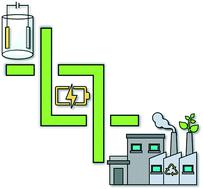当前位置:
X-MOL 学术
›
React. Chem. Eng.
›
论文详情
Our official English website, www.x-mol.net, welcomes your feedback! (Note: you will need to create a separate account there.)
Organic electrosynthesis: from academia to industry
Reaction Chemistry & Engineering ( IF 3.9 ) Pub Date : 2020-04-21 , DOI: 10.1039/d0re00064g Matthew C. Leech 1, 2, 3, 4 , Anthony D. Garcia 1, 2, 3, 4 , Alessia Petti 1, 2, 3, 4 , Adrian P. Dobbs 1, 2, 3, 4 , Kevin Lam 1, 2, 3, 4
Reaction Chemistry & Engineering ( IF 3.9 ) Pub Date : 2020-04-21 , DOI: 10.1039/d0re00064g Matthew C. Leech 1, 2, 3, 4 , Anthony D. Garcia 1, 2, 3, 4 , Alessia Petti 1, 2, 3, 4 , Adrian P. Dobbs 1, 2, 3, 4 , Kevin Lam 1, 2, 3, 4
Affiliation

|
The growing impetus to develop greener and more cost-efficient synthetic methods has prompted chemists to look for new ways to activate small organic molecules. Among them, electrosynthesis is one of the greenest and cheapest since it is possible to perform redox reactions without the need for any chemical reagents. Even though electrosynthesis is on the verge of a resurgence, it is far from being a new discipline. In fact, organic electrosynthesis was popularised by Manual Baizer in the early 60s while working at Monsanto. In this article, we will review the major, as well as the most recent, achievements in industrial organic electrosynthesis.
中文翻译:

有机电合成:从学术界到工业界
发展更绿色,更具成本效益的合成方法的动力不断增强,促使化学家寻找激活小有机分子的新方法。其中,电合成是最绿色和最便宜的方法之一,因为可以进行氧化还原反应而无需任何化学试剂。尽管电合成濒临复苏,但它远非一门新兴学科。实际上,有机电合成在60年代初期由Manual Baizer推广到孟山都公司工作。在本文中,我们将回顾工业有机电合成的主要以及最新成果。
更新日期:2020-04-21
中文翻译:

有机电合成:从学术界到工业界
发展更绿色,更具成本效益的合成方法的动力不断增强,促使化学家寻找激活小有机分子的新方法。其中,电合成是最绿色和最便宜的方法之一,因为可以进行氧化还原反应而无需任何化学试剂。尽管电合成濒临复苏,但它远非一门新兴学科。实际上,有机电合成在60年代初期由Manual Baizer推广到孟山都公司工作。在本文中,我们将回顾工业有机电合成的主要以及最新成果。


























 京公网安备 11010802027423号
京公网安备 11010802027423号